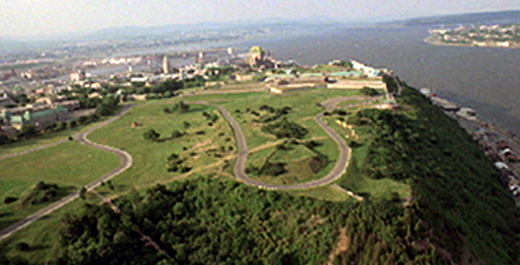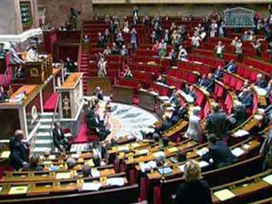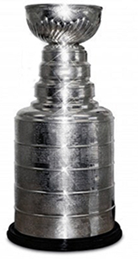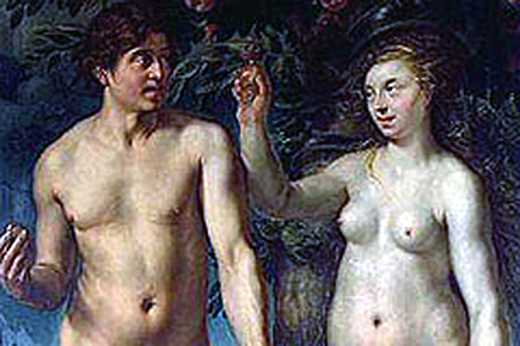
Liens de la barre de menu commune
Liens institutionnels
-
Bureau de la traduction
Portail linguistique du Canada
-
TERMIUM Plus®
-
Titres
- Aboriginal Titles
- Adjective/Adverb Aptitude
- A Look at Terminology Adapted to the Requirements of Interpretation
- Alphabet soup
- A Passion for Our Profession
- Apostroph-Ease
- A Procedure for Self-Revision
- A Question of Sound, not Sight
- Are You Begging the Question?
- Are you concerned about data security?
- Assessing translation memory functionalities
- A trilingual parliamentary glossary
- Baudelaire translated in prison by a translation professor
- Big bang and gazing into the twitterverse
- Bill Gates Protecting the Spanish Language?
- Boost Your eQ (E-mail Intelligence)
- Brave New World: Globalization, Internationalization and Localization
- Bridging the Gap
- Canada’s jurilinguistic centres
- Canadian Bijuralism: Harmonization Issues
- Cancelling Commas: Unnecessary Commas
- Changing Methodologies: A Journey Through Time
- Character Sets and Their Mysteries. . .
- Clear and effective communication for better retention of information
- Clear and effective communication: Make your readers’ task easier
- Clear and Effective Communication: Reducing the Level of Inference
- Closing in and trailing off: More digressions in punctuation
- Cloud computing
- Comashes and interro-what’s‽: Digressions in punctuation
- Commas Count: Necessary Commas
- Conference Interpretation: A Small Section with a Big Mission
- Controlling Emphasis: Coordination and Subordination
- Coping with Quotation Marks
- Corpus use and translating
- Don’t throw in the towel!
- Dubious Agreement (Part I)
- Dubious Agreement (Part II)
- Email: At once a blessing and a curse
- Emergence of New Bijural Terminology in Federal Legislation
- English Then and Now
- English Usage Guides (1974, vol. 7, 4)
- English Usage Guides (1974, vol. 7, 5)
- English Usage Guides (1974, vol. 7, 6)
- Evaluating Interpreters at Work — or Trying Not to Feel Superfluous
- Excuse Me, Have You Misplaced Your Modifier?
- FAQs on Writing the Date
- FAQs on Writing the Time of Day
- Fifty Years of Parliamentary Interpretation
- Flotsam and Jetsam of Question Period
- Forty Years of Development in the Blink of an Eye
- From book crossing to wikis
- From brand names to the smart grid
- From catchphrases to unfriend
- From Ocean to Ocean: Names of Undersea Features in the Area of the Titanic Wreck
- Further questions from the inbox
- Gender-neutral writing (Part 1): The pronoun problem
- Gender-neutral writing (Part 2): Questions of usage
- Getting to the point with bullets
- Globalization and the Forgotten Language Professionals
- Grammar Myths
- Green Buildings: Passive Solar Design
- High-Tech Translation in the Information Age
- How English has been shaped by French and other languages
- How to improve your Internet conversations
- Hyphens and Dashes—The Long and the Short of It
- Hypothetically Speaking: The English Subjunctive
- In future or in the future: What’s the difference?
- Introduction to macros for language professionals
- Irish Terminology Planning
- Is dictation outmoded?
- It’s a Long Way from Tickle Bay to Success
- "It’s very fun" may no longer be very funny
- Jurilinguistic Management in Canada
- Latin American Idiomatic Expressions
- Less is More: Eliminating on a… basis
- "literacy" and "information literacy"
- Machine translation in a nutshell
- Mankind’s Mother Tongue in the 24th Century
- More on abbreviations
- More Questions from the Inbox
- My quest for information in 2010
- National languages and the acquisition of expertise in technical translation
- Neologisms in dictionaries
- Neologisms then and now
- New questions from the inbox
- New words and novelties
- Old Church Slavonic: It Reads Like a Novel… Almost!
- Online and Offline: To Hyphenate or Not
- Open letter to young language professionals
- Pan-African Glossary on Women and Development
- Parallelism: Writing with Repetition and Rhythm
- Passive Voice: Always Bad?
- Personification of Institutions
- Plain Language: Breaking Down the Literacy Barrier
- Plain Language: Creating Readable Documents
- Plain Language: Evaluating Document Usability
- Plain Language: Making Your Message Intelligible
- Podcasting and Parkour: A Look at 2005
- Portmanteau words
- Prepositional usage with disagree
- Pronoun Management 101
- Pronouns: Form Is Everything
- Publishing in the digital era and expressions in the news
- Punctuation Myths
- Punctuation Pointers: Colons and Semicolons
- Putting It (Even More) Plainly
- Putting It Plainly
- Quasquicentennial
- Questions from the Inbox
- Realistic dreams of a language professional
- Résumés: Up Close and Personal
- Some Thoughts on the Translation of "Volet" into English
- Standing Order 21—We go in hopeful and come out thankful
- Style Myths
- Technical Accuracy Checks of Translation
- That and Which: Which is Which?
- The alchemy of words: Transforming “Le vaisseau d’or” into “The Ship of Gold”
- The Auxiliary Verbs "Must", "Need" and "Dare"
- The case of the disappearing colon: Death by bullets
- The Classification of Bills in the House of Commons
- The Deep Web
- The Diversity of the Abbreviated Form
- The Elusive Dangling Modifier
- The good ship Update
- The Grammar of Numbers
- The How-Tos of Who and Whom
- The human–machine duo: Productive…and positive?
- The Japanese Language: A Victim’s Impressions
- The Language of Shakespeare
- The Language That Wouldn’t Die
- The Other Germanic Threat That French Staved Off
- The People Versus Persons
- There May Be a Hypothec in Your Future!
- The secrets of syntax (Part 1)
- The secrets of syntax (Part 2)
- The SVP Service: A brief history
- The Translation of Hidden Quotations
- The ups and downs of capitalization
- The ups and downs of online collaborative translation
- The Use of the Hyphen in Compound Modifiers
- Through the Lens of History: Colourful personalities, perks and brilliant comebacks
- Through the Lens of History: French: The working language in the West
- Through the Lens of History: Historic, fateful or comical translation errors
- Through the Lens of History: Jean L’Heureux: Interpreter, false priest and Robin Hood
- Through the Lens of History: John Tanner, a white Indian between a rock and a hard place (I)
- Through the Lens of History: John Tanner, a white Indian between a rock and a hard place (II)
- Through the Lens of History: Joseph de Maistre or Alexander Pushkin? The confusion caused by Babel
- Through the Lens of History: Scheming Acadians and translators "dealt a blow to the head by fate"
- Through the Lens of History: Translating dominion as puissance: A case of absurd self-flattery?
- To Be or Not To Be: Maintaining Sentence Unity
- To Drop or Not to Drop Parentheses in Telephone Numbers
- Training Interpreters for La Relève-Part I
- Training Interpreters for La Relève-Part II
- Training Interpreters for La Relève-Part III
- Translating Arabic Names
- Translating the World: Out of Africa
- Translating the World: Uncharted waters
- Translating tweets
- Translation and Bullfighting
- Translation memories and machine translation
- Translators and ad hoc terminology research in the 21st century
- TRENDS
Free Public Domain Software - Trends
This Ordeal has Gone on Long Enough
(Free the data! Free the data! Free the data!) - Understanding Poorly Written Source Texts
- Understanding search engines
- Usage Myths
- Usage Update (Part 1): Verbifying
- Usage Update (Part 2): Deplorable or Acceptable?
- Using headings to improve visual readability
- Voice recognition for language professionals
- Voicewriting
- Voluntary Simplicity in Translation
- Web Addresses: Include http:// and www.?
- WeBiText to the rescue
- Well-Hyphenated Compound Adjectives
- Well-kept translation memory secrets
- What does "Organic" Actually Mean?
- What is a wiki?
- What’s hot
- What’s New?
- Why Do Minutes Count?
- Words First: An Evolving Terminology Relating to Aboriginal Peoples in Canada
- Words from the West
- Wordsleuth (2000, vol. 33, 2)
- Wordsleuth (2000, vol. 33, 4)
- Wordsleuth (2001, vol. 34, 3): The Kumbh Mela
- Wordsleuth (2001, vol. 34, 4): Rip, Mix, Burn?
- Wordsleuth (2002, vol. 35, 1): Too Many Words: Redundancies and Pleonasms
- Wordsleuth (2002, vol. 35, 2): Never Say Never to an Oxymoron
- Wordsleuth (2002, vol. 35, 3): Redundancies—Again
- Wordsleuth (2002, vol. 35, 4): Quiz on Prepositional Usage
- Wordsleuth (2003, vol. 36, 2): A War of Words
- Wordsleuth (2003, vol. 36, 3): Absolute Adjectives—Not So Absolute After All
- Wordsleuth (2004, vol. 1, 1): Of Bangbellies and Banquet Burgers: Updating the Canadian Oxford Dictionary
- Wordsleuth (2004, vol. 1, 2): Canadian English: A Real Mouthful
- Wordsleuth (2004, vol. 37, 1): LET’S PARTY!
- Wordsleuth (2004, vol. 37, 2): Here’s to Your Health!
- Wordsleuth (2005, vol. 2, 1): Would a Camrosian by any other name smell as sweet?
- Wordsleuth (2005, vol. 2, 2): 2004 - A YEAR IN WORDS
- Wordsleuth (2005, vol. 2, 3): The Words of Our Lives
- Wordsleuth (2006, vol. 3, 2): Brand Awareness
- Wordsleuth (2006, vol. 3, 3): Test Your Knowledge of Canadiana!
- Wordsleuth (2006, vol. 3, 4): The Dictionary: Disapproving Schoolmarm or Accurate Record?
- Wordsleuth (2007, vol. 4, 1): When the Eye-Gazing Party Ends in a Bump
- Wordsleuth (2007, vol. 4, 2): Rule Britannia
- Wordsleuth (2007, vol. 4, 3): Games Canadians Play
- Wordsleuth (2007, vol. 4, 4): Loyalists to Loonies: A Very Short History of Canadian English
- Wordsleuth (2008, vol. 5, 1): Status quo
- Wordsleuth (2008, vol. 5, 2): Ptoing the Line for a Small Phoe
- Wordsleuth (2008, vol. 5, 3): Test Your Spelling!
- Wordsleuth (2008, vol. 5, 4): All in the Same Boat
- Words Matter: Going Solar
- Words Matter: In the aftermath of Copenhagen
- Words Matter: Translating IT metaphors is not always easy
- Words on the street (Part 1)
- Words on the street (Part 2)
Divulgation proactive
Avis important
La présente version de l'outil Favourite Articles a été archivée et ne sera plus mise à jour jusqu'à son retrait définitif.
Veuillez consulter la version remaniée de l'outil Favourite Articles pour obtenir notre contenu le plus à jour, et n'oubliez pas de modifier vos favoris!
La zone de recherche et les fonctionnalités
Through the Lens of History: Historic, fateful or comical translation errors
Those who have practised the art of translation without first reflecting on the intellectual gymnastics required are unanimous in their recognition of the obstacles and pitfalls awaiting them at every twist and turn in the translation. Throughout history, accounts of the difficulty of this perilous activity abound. Here is just a small sample:* “Translation is not as easy as the average person thinks it is.”1 “Among the language arts, there is nothing harder than translating well.”2 “It is harder to write others’ thoughts than one’s own.”3 “Of all the books that one could write, I think the most difficult would be a translation.”4 Its complexity is the very reason why translation occasionally gives rise to mistakes that have harmless, tragic or amusing consequences. Some of these inaccuracies become so firmly entrenched in the target language that they are impossible to root out.
Just looking at our two official languages, we can identify three kinds of translators: those who know both French and English very well; those who know French well, but not English; and those who know English well, but not French. Only those in the first group make good translators. They master their working languages and have an impressive way with words. Their translations are first-rate, as they make the same impression on readers as do the original texts. Any conscientious professional translator strives for this ideal. Amateur, slapdash or charlatan translators do not impose the same stringent requirements on themselves.
Capes and plains
Contact between languages, coupled with a lack of linguistic knowledge, can lead to interference. For example, Saint-Malo explorer Jacques Cartier called the cape on the Gaspé Peninsula between Percé and Grande-Rivière Cap-d’Espoir. Ironically, it has also been called Cap-Désespoir, as the English referred to it as Cape Despair. This phonetic-based mistranslation can be likened to the Gaspésians’ linguistic distortion of lighthouse into litousse (var. létousse). To each linguistic group its own imaginative translations and whimsical creations of place names and words!
Similarly, how many guardians of the French language in Quebec know that the popularly named Plains of Abraham—a historic site if ever there was one—conceal an anglicism? The toponym Plains of Abraham appeared for the first time on an English map in the early days of English rule. Translated back into French, it produced the calque plaines d’Abraham. Yet, during the French regime, the high ground above the plot of land belonging to Abraham Martin (1589–1664) was always referred to as the Hauteurs d’Abraham.5 This was not without good reason, given that the heights on Quebec City’s promontory form a plateau, not a plain, an incorrect term in this context.** Was it a bit of nose-thumbing by the Anglo-Saxon conquerors? Historical facetiousness?

The battle of the Plains of Abraham was over in approximately 15 minutes, but the battle waged by Francophones against anglicisms goes on. It would be futile, however, to try to eradicate the anglicism plaines d’Abraham from our linguistic landscape, given how deeply embedded it is in our language and history—one might even say, in our national consciousness. The following anecdote serves as ab absurdo confirmation. Upon hearing “the Plains of Abraham” in his earphones, a foreign interpreter unfamiliar with Canadian place names automatically translated it as les avions d’Abraham, which left those listening quite taken aback. It just goes to show that a perfect command of the languages in question is not all that’s required to produce good translations. Knowledge of the world is also required.
A disembowelled fly
“You translate not just words,” writer and translator Marie José Thériault reminds us, “but also a way of living and thinking.”6 When American or English-Canadian writing is translated in France, even by very competent translators, some purely North American things can be erased. Thus, the 5 & 10 variety stores, aka five-and-dimes or dime stores, mentioned by F. Scott Fitzgerald in one of his short stories became in the hands of a translator from France “Prisunic,” a chain that did not even exist in North America. A Canadian translator would have probably rendered “5 & 10” as 5-10-15 in French, since that was what these stores were called at the time.
In a Margaret Atwood novel, a mouche éventrée (disembowelled fly) makes a strangely sudden appearance where a braguette ouverte (open fly) should be.7 Since zippers exist on both sides of the Atlantic, the translator’s blunder could only be due to a lapse in concentration or a lack of sleep. This mistranslation is reminiscent of the notorious machine translation of “Time flies like an arrow”: Les mouches du temps aiment une flèche.
In Marilyn French’s novel The Women’s Room,8 the passage “down at the Sunoco station there was a full-sized cardboard poster of a lady in a bathing suit” is rendered into French as “à la gare de Sonnoco [sic], une photo grandeur nature d’une dame en maillot de bain.” Here, the translator has turned a gas station into a train station and the franchise’s name into a place name. This example and the following one confirm that between the lines of any text lies an implicit part of the message. Consciously or subconsciously deciphering that part is essential to grasping the full meaning. Once again, knowledge of the world.…
Turning the word hémicycle into a synonym for the House of Commons, as was the case in the translation of an official document, betrays ignorance of the fact that the chamber where Canada’s elected representatives sit in session is in fact rectangular, unlike that of the French National Assembly, which is in the shape of a semicircle. It’s important not to mix up geometric shapes!


The Rocket, a bonnet and a shirt
As for translations that fail to take into account the unique characteristics of a culture, the translation of Mordecai Richler’s novel Barney’s Version9 takes the prize. In Le monde de Barney, one strolls along Montréal’s St. Catherine Street and Urban Street, instead of rue Sainte Catherine and rue Saint Urbain, and Bishop Street, or rue Bishop, is strangely transformed into rue de l’Évêque. The translator would have you believe that in Montréal kids are referred to as gosses (testicles!) and go to lycée, instead of école secondaire (high school), play in courettes (courtyards), not cours (backyards), and step over congères, instead of bancs de neige (snowbanks). Plus, the Montréal Canadiens are eliminated in six jeux, instead of six matchs [games]; they win the Stanley Cup*** thanks to Maurice Richard, aka la Fusée, not Le Rocket; a referee gives Dickie Moore a carton rouge (red card used in soccer), not a penalty; and the narrator wants to attraper (physically catch), instead of ne pas rater (figuratively catch), the créneau horaire des news (news time slot), instead of bulletin de nouvelles (just “news” and without the anglicism), on CBC, instead of Radio-Canada, needlessly specifying that it’s a national network. Can someone be so unaware of the unique characteristics of Montréal, Quebec and Canada? Clearly the translator was unfamiliar with the monde de Barney. Although readable, the translation strips Richler’s writing of its North American character and turns it into foreign prose, which some might view as an act of cultural sabotage.****

Other, more harmless translation errors can be quite funny. For example, Abbé Prévost, translating an account of a voyage by William Towston, came across a sentence stating that the English navigator, having run out of full sails, used a bonnet, i.e. a small sail that attaches to a course (the lowest primary sail). Not well versed in nautical terms, the author of Manon Lescaut calqued “bonnet” into French without batting an eye. However, since bonnet means “hat” or more specifically “cap” in French, he essentially wrote that Towston was able to sail to the Isle of Wight by hanging his old cap on the mast.10
While we’re on the topic of clothing, it’s worth noting that Pierre-Antoine de La Place, who after Voltaire was the first to translate Shakespeare into French, rendered the title of Colley Cibber’s comedy Love’s Last Shift (Le dernier expédient de l’amour) as La dernière chemise de l’amour (Love’s Last Shirt). Whether it cost him dearly, leaving him with nothing but the shirt on his back…may be lost to history.
Military blunders
Toward the end of World War II, the Germans encircled the town of Bastogne and demanded that the Americans defending the town surrender unconditionally. General McAuliffe issued his famous curt reply: “Nuts!” The German interpreter’s literal rendering of the expression (the German word for a fruit consisting of a hard or tough shell around an edible kernel) threw the Wehrmacht generals into a state of confusion.

On a more serious note, we have every reason to believe that the sad fate of Hiroshima was the result of a translation error. As noted by William Craig in his book The Fall of Japan,11 one outcome of the Potsdam Conference held in July 1945 was the Allied ultimatum issued to the Prime Minister of Japan, demanding Japan’s unconditional surrender. In Tokyo, journalists urged Prime Minister Kantaro Suzuki to advise them of the official reaction. The Prime Minister replied that his government was refraining from any comment at that time. However, he used the word mokusatsu, which has multiple meanings. The Japanese news agencies and translators gave it the meaning of “to treat with silent contempt” or “to ignore,” so the Prime Minister was essentially quoted as saying, “We categorically reject your ultimatum.” Irritated by the arrogant tone of this reply, the Americans took it as a flat refusal. Ten days later, they dropped an atomic bomb on Hiroshima. This translation error cost the lives of 70,000 people.
Famous faux amis
Countless are the number of political or diplomatic incidents provoked by the English translation of the French verb demander [to ask], given its strong resemblance to the English verb “to demand,” insidiously suggesting equivalent meaning. Jean Lesage’s government fell victim to this during a federal-provincial conference in 1963, as have others before and since. The Anglophone media were offended by the Government of Quebec’s arrogant attitude. The source of many a misunderstanding, this mistranslation was inevitably followed by a hardening of English Canada’s tone with Quebec.
This mistake has a historic international precedent. Around 1830, Paris and Washington entered into heated talks over an indemnity, and President Jackson proposed extraordinary measures to Congress. A message sent to the White House by France began as follows: “Le gouvernement français demande…,” which a secretary translated as “The French Government demands….” The US President replied swiftly and forcefully that if the French government dared to “demand” anything whatsoever from the United States, it would obtain nothing. Luckily, calm was restored once the translation had been corrected.12
Adam’s fig
We know that there were no apple trees in biblical lands. Why then is the forbidden fruit an apple? It’s due to a bad translation of the Latin word pomum, which means any fruit and not specifically the fruit of an apple tree (malum). The tree of knowledge would therefore not have been an apple tree, but likely a fig tree. So the fruit in the Book of Genesis that Eve is said to have given to Adam to eat and that reportedly got lodged in his throat was likely a fig.

The Bible, an oft-translated text, abounds with such mistakes. Everyone knows the following passage from the Gospel: “It is easier for a camel to pass through the eye of a needle than for a rich man to enter the kingdom of heaven” (Matthew 19:24). If the image of a camel passing through the eye of a needle seems unusual, it may be because that’s not what the Greek text states. The person who translated this Gospel into Latin mistook the word kamilos (rope) for kamelos (camel). But since the teaching is clear all the same, the exegetes did not deem it necessary to rectify the mistake.
Amusing mistranslations
In this category, one finds the following English mistranslation of Dieu défend l’adultère: God defends adultery. Without realizing that the two verbs are faux amis, the translator produced an unfaithful translation that essentially condones looser morals leading to marital infidelity.
A renowned linguist whose work was translated into Danish attended a major conference in Denmark, where he was very surprised to learn that a theory presented by a colleague—which was entirely new to him—was in fact attributed to him. It was all the result of a translation error. However, the distinguished linguist found the theory so compelling and sound that he adopted it on the spot.13 It just goes to show that a mistranslation can give rise to progress.
Misinterpretations
During a visit to China, Montréal Mayor Jean Drapeau, speaking through his Chinese interpreter, invited his audience to “hit his brother when he is drunk” (battre son frère quand il est ivre). Surprised to hear the mayor advocate such violence, the journalists requested a transcript of his speech. The mystery was solved when they discovered that the mayor had in fact said, “strike while the iron is hot” (battre le fer quand il est chaud).14
In another context, a Spanish delegate turning on his microphone said, “Estoy constipado, perdónadme,” in other words, “Please excuse me, I have a cold.” Not paying attention, the French interpreter rendered his words as, “Excuse me, I’m constipated.” The French delegation collapsed into gales of laughter, causing a stir in the room and arousing the curiosity of all. Everyone tuned into the French channel and turned around to look at the booths. The interpreter, embarrassed, attempted to explain, but to no avail. Amid the general amusement, the poor interpreter was asked to leave.15 That day, a delegate’s indisposition earned the interpreter an earful….
In conclusion, experience shows that although translation errors sometimes lead to grave consequences, like the horrible carnage at Hiroshima, they can also do good by producing new place names, breathing new life into biblical imagery, advancing linguistics and amusing an audience—not to mention introducing new navigation techniques through the use of an old cap (un bonnet).
Remarks
- * Excerpts from my collection of over 3,000 quotations, La traduction en citations, Les Presses de l’Université d’Ottawa, 2007.
- ** It is officially called Battlefields Park.
- *** This is an improvement, however, over the tasse Stanley: “La salle du conseil d’administration des Brasseries Molson à Montréal ne ressemble à aucune autre au Canada […] Comme décoration moderne, on trouve seulement deux tasses Stanley miniatures, montrant que les Canadiens de Montréal appartiennent à la plus importante brasserie du pays.” (Shirley E. Woods, La saga des Molson, 1763-1983, translated by Marie-Catherine Laduré, Éditions de l’Homme, 1983, p. 15.)
- **** In the publisher’s defence, it should be noted that the worst mistakes were corrected in the 2010 edition, printed in Quebec by Transcontinental Gagné.
Notes
- 1 Pierre Daviault, “Cours de traduction” [Translation Seminar], University of Ottawa, School of Translation and Interpretation, 1936. Unpublished.
- 2 René and Jeannine Étiemble, L’art d’écrire, Seghers, 1970, p. 12.
- 3 Michel de Marolles, Preface to Satyres de Juvénal [c1653], quoted in Roger Zuber, Les “belles infidèles” et la formation du goût classique, A. Colin, 1968, p. 137.
- 4 Alphonse de Lamartine, quoted in Pierre Larousse, Grand dictionnaire universel du XIXe siècle […], Larousse et Boyer, 1866-1890, Vol. 15, p. 389.
- 5 Marcel Trudel, Mythes et réalités dans l’histoire du Québec, Hurtubise, 2010, Vol. 5, p. 136.
- 6 Quoted in Corinne Durin, “Entretien avec Marie José Thériault,” Spirale, No. 147, 1996, pp. 16–17.
- 7 Ibid.
- 8 Translated by Philippe Guilhon, Laffont, 1978, p. 31.
- 9 Translated by Bernard Cohen, Albin Michel, 1999.
- 10 Henry Harrisse, L’abbé Prévost: histoire de sa vie et de ses œuvres d’après des documents nouveaux, C. Lévy, 1896, p. 49.
- 11 Dell Publishing, 1967, pp. 58–59. French version: La chute du Japon, translated by Jacques Brécard, Laffont, 1969, pp. 97–98.
- 12 “Traduction fautive,” Le Devoir, November 29, 1963, p. 4.
- 13 Actes des premières assises de la traduction littéraire (Arles 1984), Actes Sud/ATLAS, 1985, p. 125.
- 14 Monica Anthony, Mosaic, Vol. 3–4, 1996, pp. 19–20.
- 15 John Coleman-Holmes, Mâcher du coton, Entre-temps, 1971, p. 201.
© Services publics et Approvisionnement Canada, 2025
TERMIUM Plus®, la banque de données terminologiques et linguistiques du gouvernement du Canada
Outils d'aide à la rédaction – Favourite Articles
Un produit du Bureau de la traduction


